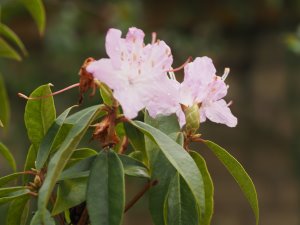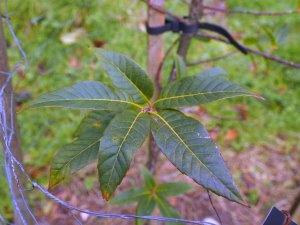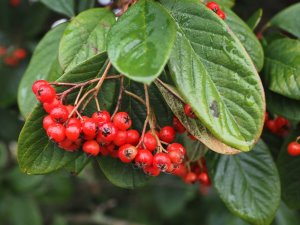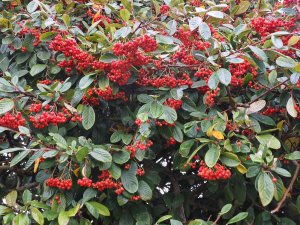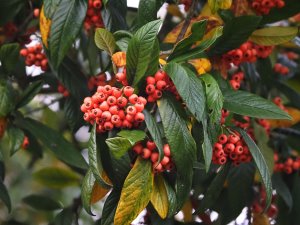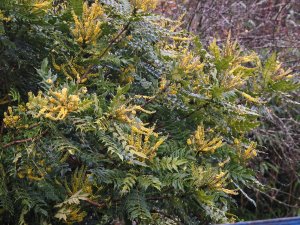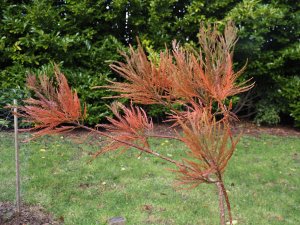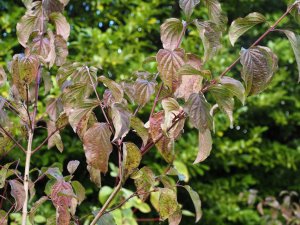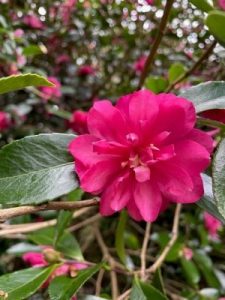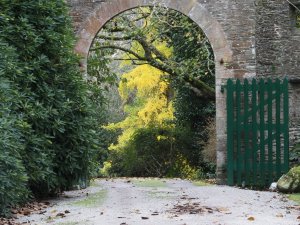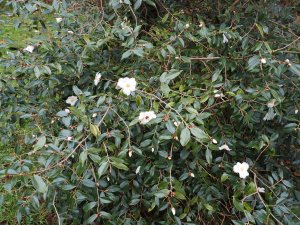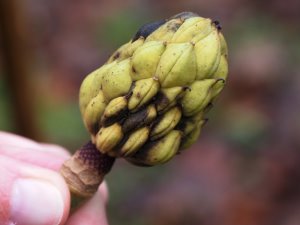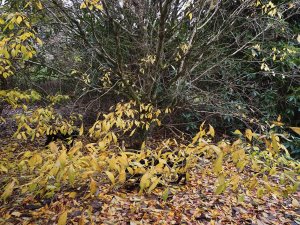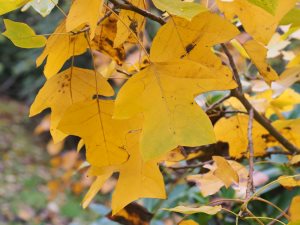2025 – CHW
The swimming pool walls take shape.


Salix udensis ‘Golden Sunshine’ is a good show today in Tin Garden.
In a back street in Tregony I spy this wonderful multi-stemmed and multi-branched Cotoneaster frigidus.
Glyptostrobus pensilis ‘Wooly Mammoth’ with its peculiar autumn tints. A broken branch has quickly produced new growth.
Burning up the dead malus by the garden entrance.
2020 – CHW
The Gingko biloba through the front arch.
Salix udensis ‘Golden Sunshine’ produces golden autumn colours as well as genuinely yellow leaves in the spring and summer.
Glyptostrobus pensilis ‘Wooly Mammoth’ has reverted to its rather impressive autumnal or winter colours.



Sadly I was too late for the best show of Prunus ‘Shirotae’ on the drive. It was gorgeous in the sun a few days ago with red tints in the yellow leaves but now most are on the ground.
Jaimie did however do a rather better job a few days ago but still too late.
2018 – CHW
The dead Lithocarpus henryi has now been felled and logged. The sad demise from old age of an original, rare and perhaps record tree which was in its prime in the 1960s when first measured formally. The rings look more alive than the rotting trunk suggested when I photographed it a few days ago but the last live branches finally died in the summer drought. We thought about felling it first three years ago but allowed nature to take its course. I have been trying to obtain a replacement for some time but without success as yet although several new species of Lithocarpus have been added to the collection in the last 15 years.
The area now needs grubbing out of all stumps of old camellias to make a nice new planting
place.
Two extraordinary new things in the frames:Berberis xanthoclada with rich bright red autumn foliage. A new species to us. As red as it is possible to get I think but then I move on!
The Ginkgo biloba is now turning fast. Possibly the best thing this year in the autumn colour range in a good year for colour. One good blow now and that will be that.
2015 – CHW
The first flower on Camellia williamsii ‘St Ewe’ outside the Georgian Hall.

Lapageria ‘Picotee’ has two flowers still out although I photographed this weeks ago. Few plants have longer lasting flowers!

1996 – FJW
Very similar to 1986 – but Oleifera full out – one half open bud on November Pink. Very wet November.
1986 – FJW
Picked one miserable flower on Oleifera. Late year. Dry early autumn. Wet November. Mild.
1982 – FJW
First frost after a very wet autumn – perhaps a rain record.
1969 – FJW
First snow of winter.
1953 – CW
Still very mild. Small polyanthus daffodil from S Devon open by dining room put there this year. Early pink form of Saluenensis has a few flowers in 3 places. I counted over 200 flowers on November Pink, and over 100 on the ground. Taliensis good – Oleifera very good. Lapagerias. fuchsias and roses still on. Also Magnolia grandiflora and delavayi. Few rhodo’s.
1931 – JCW
Lapageria has been good since mid October. C sasanqua give some flowers. Erica darleyense is opening. The autumn cherry at the quarry is in flower. An evergreen magnolia or two. Rho lutescens shows colour.
1924 – JCW
The same as above. C sasanqua are poor, too cold a summer. Autumn colours good for here in particular where there was shelter from the wind. Berberis polyantha is the best thing. The daffs have begun to move. We have had one sharp frost and Enkianthus reticulatus from Hong Kong faced it.
1915 – JCW
C sasanqua is very bad, no buds this year. Lapagerias are nice. Erica hybrida began to open a fortnight ago.









